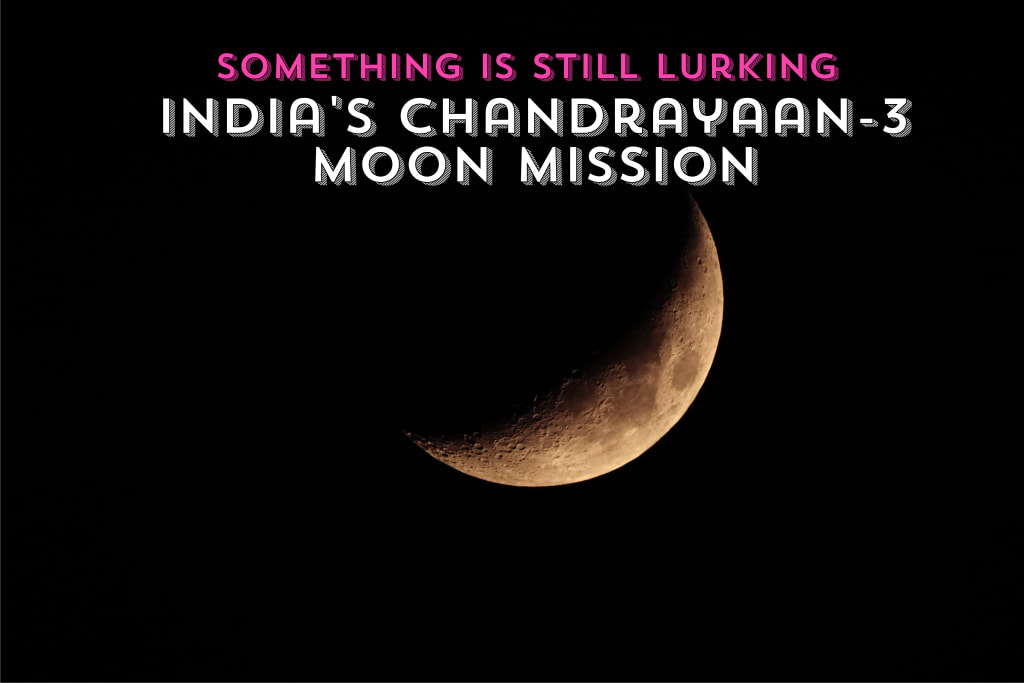Unveiling the Enigmatic Secrets Beneath the Moon's Surface: India's Chandrayaan-3 Moon Mission
The success of the Chandrayaan-3 mission raises even more questions about our already mysterious Moon

India's Chandrayaan-3 Moon mission has already achieved a significant milestone in space exploration. It has made history by becoming the fourth nation to successfully land a spacecraft on the Moon and the first to land at its south pole. The discoveries made by the lander Vikram and rover Pragyan have provided valuable insights into the Moon's chemical composition and geological history. This data will greatly assist future missions to the Moon. However, what is most intriguing is what Chandrayaan-3 did not discover but should have. The Indian Space Research Organisation (ISRO) had emphasized their primary objective of finding water on the Moon, particularly at the South Pole. The presence of water on the Moon is crucial for establishing permanent bases and utilizing its resources for human life and space exploration. While previous missions had hinted at the existence of water ice, Chandrayaan-1 and Chandrayaan-2 provided more definitive evidence, suggesting the potential presence of 600 million metric tons of water ice in the Moon's polar craters. The search for water on the Moon is of utmost importance as it could serve as a vital resource for future lunar missions.
Chandrayaan-3 proved to be a remarkably cost-effective mission, with a budget of only 6.15 billion rupees (approximately $75 million), significantly lower than the average cost of NASA's Artemis missions. Despite the limited budget, the mission faced technological constraints. The lunar night presented a challenge as the lander Vikram and rover Pragyan were not designed to withstand temperatures as low as -120°C. With a lunar day lasting 14 Earth days, Chandrayaan-3 had a limited window to accomplish its objectives before the extreme cold would jeopardize the mission's survival.
Equipped with advanced instruments, Pragyan, the 27kg six-wheeled rover, conducted in-depth analyses of the Moon's surface. Using an Alpha Particle X-ray Spectrometer (APXS) and Laser-Induced Breakdown Spectroscopy (LIBS), Pragyan aimed to identify water and other interesting substances while confirming their composition for scientists. The rover successfully detected elements such as aluminium, calcium, iron, chromium, titanium, and even oxygen. The discovery of sulphur was particularly significant as it provided insights into the Moon's evolution and suggested past volcanic activity in the region.
However, despite these exciting findings, one crucial element remained elusive: hydrogen. Its absence in the analysis raised questions about the presence of water on the Moon's surface. Pragyan continued its exploration, guided manually by scientists on Earth through its navigation camera. Careful maneuvering was necessary due to the signal delay between Earth and the Moon, which could potentially lead to accidents if not accounted for.
During its journey, Pragyan narrowly avoided falling into a large crater that scientists had initially overlooked. The rover's slow speed of 1 cm per second allowed it to cover a maximum distance of 100m from Vikram throughout its two-week lifespan. While no images of a second crater were available, Pragyan's decision to circumvent it suggests that no ice was observed there.
In conclusion, Chandrayaan-3 achieved remarkable results within its limited budget and timeframe. The mission provided valuable insights into the Moon's composition and geological history, although the search for water and ice remains an ongoing endeavor for future lunar missions.
During its mission, the Vikram lander was not idle and conducted various experiments to gather data. It measured the temperature of the Moon's surface by digging 10cm deep to measure the warmth at different depths. Vikram also measured the plasma content of the atmosphere, which showed that radio communication with the Moon would not experience much interference. The lander even detected a possible moon-quake, which was excellent timing given the mission's short duration. At the end of its journey, Vikram performed a 40cm high "hop" using its boosters, moving 30-40cm from its previous destination. This was a useful practice run to test how easy it would be for future landers to propel themselves back into orbit from the Moon.
Despite these achievements, Chandrayaan-3 was unable to find water ice on the Moon's surface. Vikram and Pragyan were ordered to power down on September 4th, and scientists were unable to wake them up again once the lunar night ended. While the mission provided valuable data about the Moon's conditions and history, it also raised a mystery about the absence of water ice on the Moon's surface.
Chandrayaan-3 offers a possible explanation for this mystery. When Vikram used its ChaSTE temperature sensor, it found that temperatures above the Moon's surface were too hot for humans to survive but dropped significantly as it measured deeper beneath the surface. This suggests that we may need to look beneath the Moon's surface to find water ice, as it is unlikely to be resting on the surface.
There is still much we don't understand about the Moon and its water cycles. However, Chandrayaan-3 has provided vital insights into conditions on the Moon and offered useful advice for future astronauts: if they want to find water on the Moon, they might want to bring a shovel.
About the Creator
Saomai2003
The universe is a vast and mysterious place that has fascinated humans for centuries. From the tiniest subatomic particles to the largest galaxies, the universe is full of wonders that challenge our understanding of the world around us.
Enjoyed the story? Support the Creator.
Subscribe for free to receive all their stories in your feed. You could also pledge your support or give them a one-off tip, letting them know you appreciate their work.






Comments
There are no comments for this story
Be the first to respond and start the conversation.